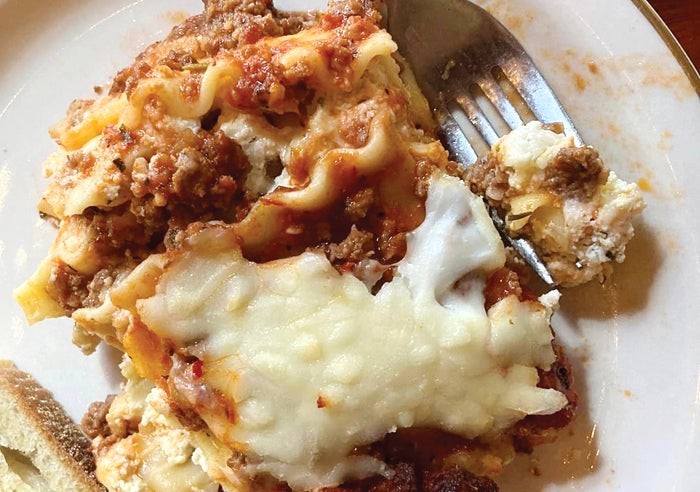Backyard hens: Eggstraordinary results
Published 12:00 am Tuesday, August 26, 2014
For the past four or five years, thanks to my husband, we’ve been growing our own spinach, tomatoes, peppers, eggplant, okra and basil. A few months ago, we decided to up the ante on our hyper-local eating.
I’d been wanting some laying hens ever since I wrote a story for the Post a few years ago on the surging popularity of urban chickens. A few Salisbury friends were successfully raising chickens, and the daily routine sounded like something we could handle. It took a while for my husband to get on board with the idea, but this spring he announced that he wanted to set me up in chickens.
So my birthday present this year was a mobile chicken coop — or “henpen” — from Rooster Hill Farms in China Grove, which delivered the coop and everything else we needed to get started, including six Golden Comet hens. Like most urban chicken farmers, we do not have a rooster in our flock because unless you want fertilized eggs, roosters are unnecessary and guaranteed to annoy your neighbors.
Since the coop is on wheels, we move it around the yard every few days so the chickens get fresh areas to forage in and no one part of our yard gets destroyed. A ramp allows the hens access to the coop’s upper level, where there are three nesting boxes and a roosting area.
Every day, we collect five or six lovely brown eggs. And every day, it feels like a miracle.
One of my earliest memories of growing up on a farm is of gathering eggs with my grandmother in her henhouse. Around the same time, my father and grandfather were raising chicks (or peeps, as we called them) in a much larger chicken house. I loved to watch those little balls of yellow fluff running around. Turns out my dad wasn’t a chicken farmer at heart, and the poultry was replaced by sheep, but he saved all those old glass chicken waterers. On a visit last month, I found them, cleaned them up and hauled them home to Salisbury.
Our hens eat store-bought chicken feed, but for a few hours a day they free range in our fenced-in back yard while the dogs pout and plot revenge inside. Some dogs can co-exist peacefully with free-ranging chickens, but we’re pretty sure our William is not that sort of dog.
It’s fun to watch the chickens running around, happily scratching and kicking up dirt and pebbles and foraging for insects and clover. Sometimes we turn rocks over for them and help them spot creepy crawly things to eat. They like human food as well, including watermelon and grapes and steak scraps (sorry, William!), and they can’t seem to get enough tomatoes from our garden. When they’re happy, they do a sort of deep-throated vocalizing — chicken purring? — that is wonderful to hear.
Shortly before the sun goes down, the girls find their own way back to the coop, climb up the ramp and roost inside for the night.
Fresh eggs from backyard chickens are undoubtedly more tasty and nutritious than factory farm eggs, which might be a more than a month old by the time you get them. As wonderful as fresh, local eggs are, they do present a unique challenge to the cook. When you hard-boil them, the shell sticks to the white, making the egg very difficult to peel without losing a lot of the white.
To avoid those unsightly divots, some cooks pierce a small hole in the egg before boiling. I haven’t tried that, but I’ve gotten decent results boiling eggs for 15-18 minutes and then immersing them immediately in an ice water bath for another 15 minutes or so.
Scrambles, omelets and frittatas
Fresh eggs are so good that even simple dishes — like scrambles — will taste heavenly. This past weekend, my husband sautéed some green peppers and tomatoes from our garden, along with some low-fat chicken-mango sausage. He then poured a mixture of eggs, milk and cheese into the pan with the sautéed vegetables and scrambled everything together. It wasn’t the prettiest dish he’s ever made, but it was quite tasty.
I’m a big fan of omelets stuffed with sautéed vegetables and cheese and sometimes topped with fresh salsa. The key to a good omelet is a great pan, I think, and contrary to popular belief, you don’t need a non-stick pan to make a decent omelet.
Frittatas are another great way to use fresh eggs, especially if you own a cast-iron skillet. For a nice light supper for two or three people, beat six-eight eggs, then add your favorite kind of shredded cheese. Set aside. In medium-sized cast-iron skillet with a little butter or olive oil, sautee some veggies — peppers, squash, onions, mushrooms or diced potato all work well — and whatever spices you like. (If you use diced potatoes, you’ll need to sautee them first, and then add the other vegetables, since they take longer to cook than the other vegetables.) Carnivores can toss in some cooked ham or sausage. Keeping the heat at medium, pour the egg mixture on top of the sautéed ingredients. Without stirring, cook on the stove until the eggs have set. The top will be runny, so you will need to finish your frittata by popping the skillet into the oven and broiling until the top is lightly browned.






